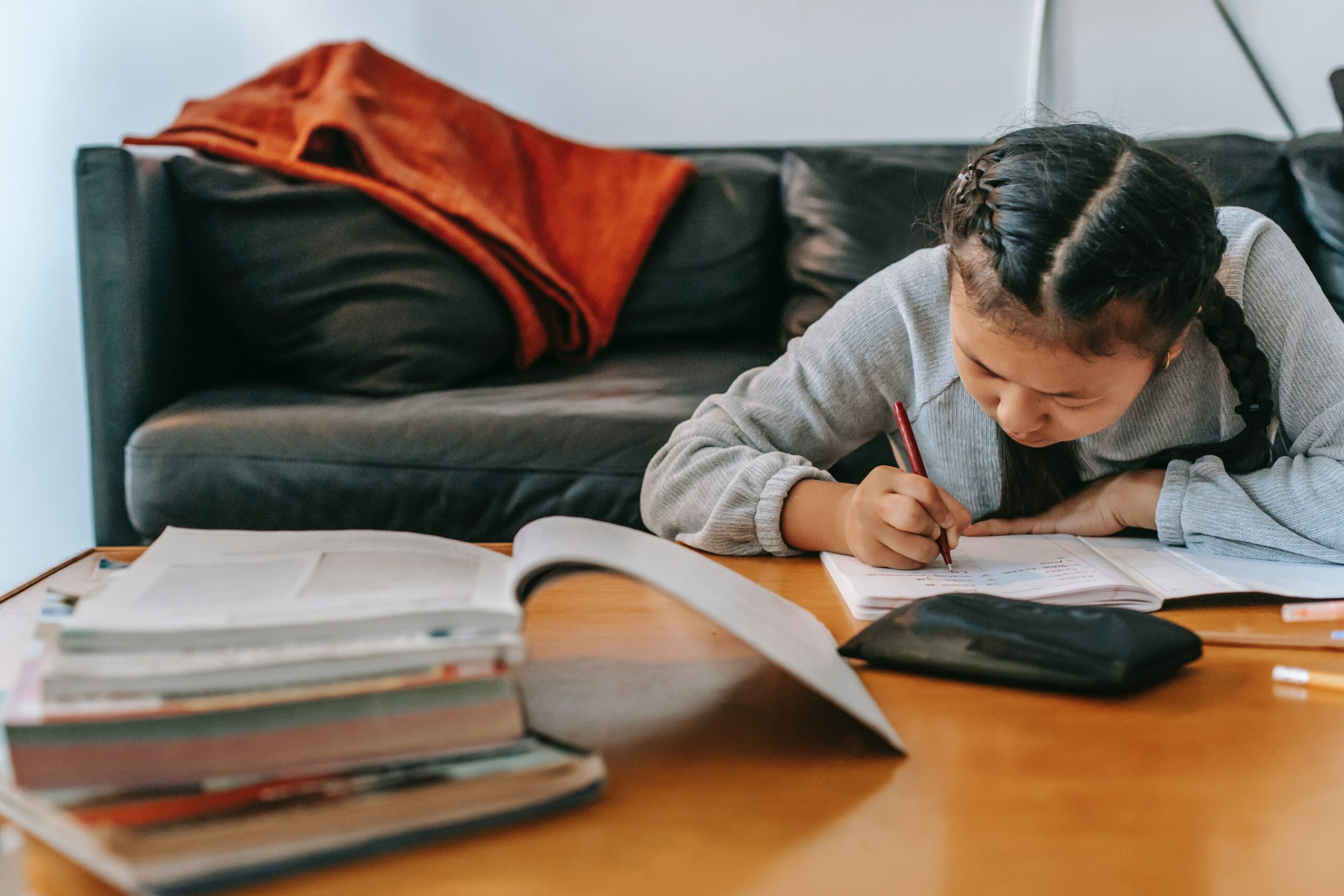Note-taking plays a vital role in the learning process as it aids in comprehending, retaining, and reviewing information. However, note-taking strategies can vary depending on an individual’s learning style. Understanding your learning style can help you adopt the most effective note-taking approach.
What Are the Main Styles of Learning, and How to Work With Them?
Different learning styles include visual, auditory, and kinesthetic.
- Visual Learners benefit from visual aids such as diagrams, charts, and color coding to organize information.
- Auditory Learners may find it helpful to record lectures or discussions and review them later.
- Kinesthetic Learners prefer a hands-on approach, such as taking notes while actively engaging in activities or using physical objects to represent concepts.
- Reading and Writing Learners (Verbal-Linguistic Learners) excel in learning through written material and engaging in activities involving reading and writing.
This article will explore note-taking strategies tailored to different learning styles. For Visual Learners, techniques like mind maps and diagrams will be discussed. Auditory Learners will find tips on recording and transcribing important information. Kinesthetic Learners can discover methods that involve movement or tactile experiences. Reading and Writing Learners are presented with suggestions for best engaging in reading and writing activities.
Why Should Every Student Understand Their Perception Features?
Understanding learning styles is crucial for effective note-taking strategies. Learning styles refer to the different ways individuals process and retain information. Visual Learners prefer visual aids like graphs and diagrams, while Auditory Learners excel with verbal explanations and discussions. Kinesthetic Learners thrive with hands-on experiences and physical activities. Reading and Writing Learners are more comfortable with written words, i.e., textbooks, articles, and handouts.
Recognizing your learning style enables you to tailor your note-taking approach accordingly.
- Visual Learners may benefit from organizing information using color-coded systems and visual representations.
- Auditory Learners can focus on recording and reviewing lectures or discussions.
- Kinesthetic Learners might find incorporating movement or tactile elements into their note-taking process useful.
- Reading and Writing Learners can enhance their learning experience in written communication and language skills.
You can optimize your understanding by customizing your note-taking approach to your learning style. Whether your style is visual, auditory, kinesthetic, or reading and writing, this article will provide valuable insights to enhance your note-taking skills and overall learning experience.
How to Work With Notes for Different Learnings?
You enhance information understanding and retention by aligning your note-taking strategies with your learning style. Embracing the diversity of learning styles in education promotes more inclusive and effective learning environments.
- Visual Learners prefer visual aids and imagery in their learning process. To cater to their needs, visual note-taking techniques prove effective. Visual Learners can organize and connect information visually by creating diagrams, mind maps, and flowcharts. Color coding can be utilized to categorize and highlight key points. Using images or symbols alongside written notes enhances their understanding and retention.
When organizing visual notes, it is important to keep them clear and structured. Utilize headings, subheadings, and bullet points to create a hierarchy of information. Use whitespace effectively to provide visual clarity. Review and revise visual notes regularly to reinforce the connections between concepts.
- Auditory Learners thrive in environments that involve listening and verbal communication. Recording lectures or discussions lets them focus on listening rather than extensive note-taking. Afterward, they can review and supplement their notes with important points and details. Utilizing mnemonic devices, such as acronyms or rhymes, can assist in memorization and recall.
Active listening is key for Auditory Learners. Engaging in discussions, asking questions, and participating in class activities help them absorb information. They can enhance their notes by summarizing key points, paraphrasing concepts in their own words, and creating audio recordings of essential discussions or explanations.
- Kinesthetic Learners thrive through hands-on experiences and physical activities. Incorporating movement and engagement into note-taking can enhance their understanding. Utilizing interactive note-taking methods, such as role-playing, simulations, or creating physical models, allows kinesthetic learners to participate in the learning process actively.
For Kinesthetic Learners, associating actions with information is crucial. They can use gestures or movements to connect concepts and reinforce learning. Incorporating tactile elements like textured materials or writing on a whiteboard can also aid their comprehension.
- Reading and Writing Learners learn by developing communication and linguistic knowledge. Working with dictionaries, encyclopedias, and other books is good for developing vocabulary and information-processing skills.
By understanding words and phrasing, one can better express the significance of thoughts and deliver accurate messages. Regular practice with different types of materials will help.
- Multimodal Learners prefer to receive and process information through multiple sensory channels. They benefit from combining various note-taking strategies to optimize their learning experience. These learners can integrate visual, auditory, kinesthetic, and reading-writing elements in their notes to enhance understanding and retention. For example, they can create visual diagrams while verbally explaining the concepts or incorporate hands-on activities involving movement and visual representation.
Recognizing one’s learning style is essential in selecting effective note-taking strategies. Encouraging readers to experiment with different methods and techniques enables them to discover what works best for their learning preferences. Adapting and customizing note-taking strategy based on individual needs and preferences is crucial. It may involve modifying existing techniques, combining different approaches, or developing personalized systems that suit their unique learning style.
Being self-aware and open to exploring different strategies empowers individuals to maximize their note-taking potential and overall learning outcomes!
The Main Technological Tools for Note-Taking
The advancement of technology has provided us with a range of digital note-taking tools that can significantly enhance the note-taking process. These tools offer advantages such as convenience, accessibility, and flexibility.
- Visual Learners should use applications that allow for creating digital diagrams, mind maps, and annotations.
- Auditory Learners can use recording apps or software that capture lectures and meetings for later review.
- Kinesthetic Learners can explore interactive note-taking platforms that offer hands-on engagement and manipulation of content.
- Reading and Writing Learners can use special programs to compose quick notes for later review.
Digital note-taking tools also offer benefits in terms of organization and revision. Features like search functions, tagging, and syncing across devices help keep notes well-organized and easily retrievable. Additionally, the ability to edit, highlight, and add annotations digitally simplifies the revision process.
Exploring and experimenting with different technological tools is essential to find the ones that align with your learning style and preferences. Integrating technology in note-taking can revolutionize how you capture, organize, and review information, ultimately enhancing your overall learning experience. If you need help designing study notes, review other students’ materials to see how they organize their findings.
Why Can Notes Be Difficult to Work With?
Note-taking sometimes presents challenges that hinder the effectiveness of the process. Common challenges include information overload, difficulty capturing all relevant details, and difficulty with note-taking speed. To overcome these challenges, it is crucial to employ certain strategies.
These may include:
- Using abbreviations and symbols, focusing on key concepts rather than transcribing every word, and utilizing structured note-taking formats like Cornell notes or outlines.
- Managing information overload can be tackled by practicing active listening, identifying main ideas, and organizing notes into categories or sections.
- Improving note-taking speed can be achieved through familiarity with the subject matter, shorthand techniques, and developing a system for recording key points efficiently.
It is essential to persevere and adapt note-taking techniques as needed. Each individual may encounter unique challenges, so it’s important to experiment with different approaches and adjust strategies based on personal preferences and learning styles.
Keep Exploring and Experimenting!
Effective note-taking strategies play a crucial role in supporting different learning styles. By implementing appropriate techniques, learners can enhance their understanding, retention, and application of knowledge. It is encouraged to explore a variety of note-taking approaches and find what works best for each individual. The process may involve trial and error, but the rewards are worth the effort.
By consistently practicing effective note-taking, learners can develop valuable skills contributing to their academic success and professional growth. The ability to capture and organize information in a personalized and meaningful way promotes deep understanding and facilitates the review and revision process. Remember, effective note-taking is a powerful tool that empowers learners to maximize their learning potential and achieve their goals!
To fine-tune our skills in note-taking and other learning skills, the expert educators at WorldWise Tutoring can help! We know how to assess learning styles and needs, and then tailor lessons and strategies accordingly. Hire a tutor near you today!








